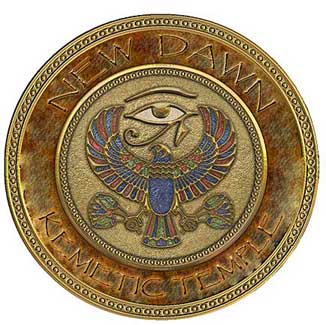|
|
|


~Craig Hildreth~
On the west bank of the Nile, but now covered by Lake Nasser, a few kilometers south of the site of Dendur, stood the temple of Gerf (Garf) Hussein. Today it has been moved to New Kalabsha, but for many years, it remained disassembled. As a side note, it took considerable time for New Kalabsha itself to be opened to the public. The reason for this was perhaps that, what became an island, was originally meant to be part of the mainland. Hence, as the waters from Lake Nasser rose above their intended level, and transport logistics therefore became a problem, it took considerable time to overcome these obstacles.
Since few people can lay claim to having seen the temple in its original location in the Nubian village from which the temple took its name, its reconstruction ranks as one of the most momentous archaeological activities of today. It recalls those days, back in the late 1960s, before the completion of the High Dam, when one could still sail from the port of Shellal south of Aswan through Nubia and see the temples in their original locations, mostly overlooking the Nile.
Gerf Hussein, or more correctly, Per Ptah, the "House of Ptah", so named by the ancient Egyptians, was actually the work of a high ranking official named Setaw (Setau) during the reign of Ground Plan of the temple Ramesses II. Other temples built in Nubia during the reign of Ramesses II include Beit el-Wali, el-Sabua, el-Derr, Aksha and of course, Abu Simbel (and some small additions to the Amada). Setaw was the viceroy of Nubia, and he supervised the temple's construction on the same plan as Ramesses II's temple at Wadi al-Sabua (the Valley of the Lions), which was also rescued from the waters of Lake Nasser during the 1960s. The temple is also very similar to the more famous Temple of Abu Simbel, farther south.
An image of one of the colossal statues of Ramesses II in the courtyard of the templeThe temple of Gerf Hussein is partly free standing and partly hewn from the rock face at the rear of the structure, and hence, a speos type structure. It is dedicated to various gods, including Ptah, Ptah-Tatenen, Hathor and of course, Ramesses II himself. Gerf Hussein is a fine temple, on a simple, symmetrical plan oriented East-West, approached through a large quadrangular court surrounded on three sides by covered colonnades of elegantly fashioned lotus columns (east end) and pillars with engaged standing statues of Ramesses II elsewhere.
The rear wall of the court is cut to imitate a pylon with battered faces and cornice. After the courtyard, in the rock- hewn part of the temple is a large, mostly square hall with a ceiling supported by six pillars against with engaged, Osiris style standing colossal statues of Ramesses II. In the lateral walls of this chamber on each side are four niches in which statuary groups of Ramesses II stand between two deities.
A transverse antechamber flanked by two deep chambers beyond the pillared hall leads to the three chapels, the largest of which is the sanctuary decorated with reliefs of Ramesses II in the company of the gods. In one relief he offers fresh vegetables to the god Bark of Ptah, while in other scenes Ramesses II is embraced by Mut and embraced by Pakhet. This is the sanctuary An archaic ipicture of the temple, apparently the courtyard for the sacred bark of Ptah that was set on a socle. At the rear of this room is a niche with a statuary group consisting of Ptah, the deified Ramesses II, Ptah-Tatenen and Hathor.
As a side note, in the Nubia Museum at Aswan, the focal point of its central exhibition hall is a colossal statue of Ramesses II which hails from Gerf Hussein. It is unique in not having been fashioned by royal sculptors, but by the people of Nubia, in sandstone. It was too fragile to be transported to New Kalabsha along the architectural elements of his salvaged temple and the other statues.